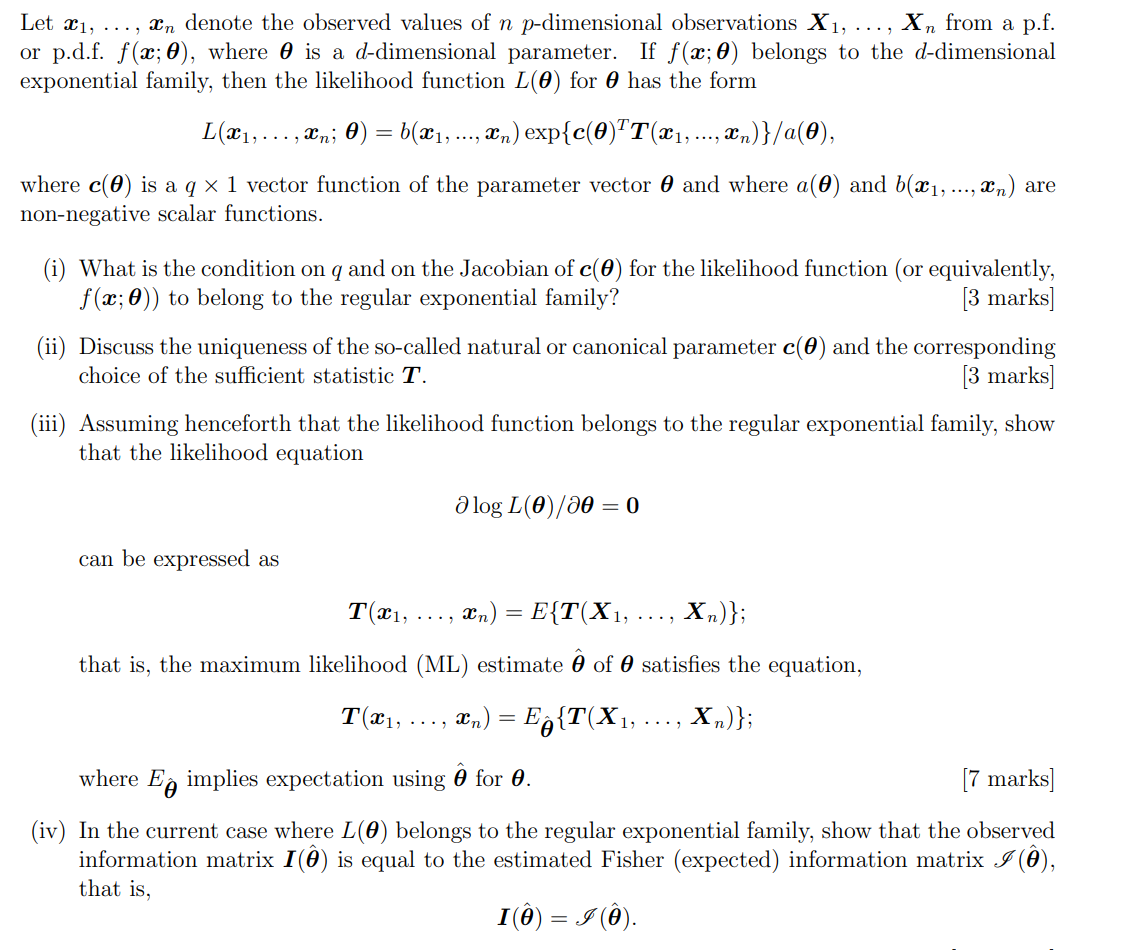Answered step by step
Verified Expert Solution
Question
1 Approved Answer
Xn from a p.f. Let x, ..., n denote the observed values of n p-dimensional observations X, or p.d.f. f(x; 0), where is a

Xn from a p.f. Let x, ..., n denote the observed values of n p-dimensional observations X, or p.d.f. f(x; 0), where is a d-dimensional parameter. If f(x; 0) belongs to the d-dimensional exponential family, then the likelihood function L(0) for has the form L(x,...,xn; 0) = b(x, ..., xn) exp{c(0)TT(x,...,xn)}/a(0), where c(0) is a q 1 vector function of the parameter vector and where a(0) and b(x,...,xn) are non-negative scalar functions. (i) What is the condition on q and on the Jacobian of c(0) for the likelihood function (or equivalently, f(x; 0)) to belong to the regular exponential family? [3 marks] (ii) Discuss the uniqueness of the so-called natural or canonical parameter c(0) and the corresponding choice of the sufficient statistic T. [3 marks] (iii) Assuming henceforth that the likelihood function belongs to the regular exponential family, show that the likelihood equation can be expressed as alog L(0)/20 = 0 T(x1, E{T(X,..., Xn)}; that is, the maximum likelihood (ML) estimate of 0 satisfies the equation, T(x1, ..., xn) = E{T(X1, Xn)}; Xn) = where E implies expectation using for 0. [7 marks] (iv) In the current case where L(0) belongs to the regular exponential family, show that the observed information matrix I() is equal to the estimated Fisher (expected) information matrix I (8), that is, I () = I ().
Step by Step Solution
★★★★★
3.52 Rating (165 Votes )
There are 3 Steps involved in it
Step: 1

Get Instant Access to Expert-Tailored Solutions
See step-by-step solutions with expert insights and AI powered tools for academic success
Step: 2

Step: 3

Ace Your Homework with AI
Get the answers you need in no time with our AI-driven, step-by-step assistance
Get Started


